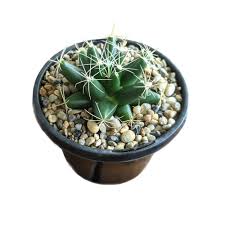Traditional Dishes in the Mid-Autumn Festival (Tết Nguyên Tiêu)

Tết Nguyên Tiêu, also known as the Mid-Autumn Festival, is one of the most significant celebrations in Vietnamese culture. It occurs on the 15th day of the 8th lunar month, typically in September or October, marking the harvest moon’s fullest appearance. The festival has deep roots in both history and cultural customs, where families come together to honor their ancestors, enjoy the beauty of the full moon, and indulge in traditional foods. Among the most iconic aspects of this holiday are the special dishes that symbolize prosperity, reunion, and good fortune. These foods are integral to the celebration, offering a glimpse into Vietnam’s rich culinary heritage. This article explores the traditional dishes associated with Tết Nguyên Tiêu, showcasing their significance, preparation, and role in the holiday festivities.
1. Mooncakes (Bánh Trung Thu)
Perhaps the most iconic dish associated with Tết Nguyên Tiêu is the mooncake, or bánh trung thu. This round pastry is made with a thin layer of dough and filled with a variety of sweet or savory fillings, including lotus seed paste, red bean paste, and salted egg yolks. The shape of the mooncake represents the full moon, symbolizing unity, completeness, and family togetherness.
The tradition of giving mooncakes as gifts during Tết Nguyên Tiêu is a practice that dates back centuries. Originally, mooncakes were used as a means of communication, as messages were hidden inside to convey important information during times of political unrest. Today, they are exchanged among family members, friends, and business associates as a symbol of goodwill and prosperity.
Types of Mooncakes: There are several variations of mooncakes depending on the region and personal preferences. The most common types include:
- Lotus Seed Paste Mooncake: A classic filling made with lotus seeds and sugar, offering a smooth, delicate texture.
- Red Bean Paste Mooncake: Another popular choice, offering a slightly sweet and earthy flavor.
- Mixed Nuts and Ham Mooncake: A savory version that includes a combination of nuts, ham, and sometimes salted egg yolks, representing wealth and longevity.
Mooncakes are often enjoyed with hot tea, and the sharing of these pastries during family gatherings is an essential part of the Tết Nguyên Tiêu celebration.
2. Sticky Rice with Coconut (Xôi Dừa)
Xôi, or sticky rice, is another traditional food often enjoyed during Tết Nguyên Tiêu. One of the most popular variations of xôi during this time is xôi dừa, sticky rice cooked with coconut milk, sugar, and a dash of salt to create a perfect balance of sweet and savory flavors. This dish is usually served as an offering to ancestors during the Mid-Autumn celebration, as rice symbolizes fertility, abundance, and good harvests.
The preparation of xôi dừa involves soaking glutinous rice in water overnight, then steaming it with coconut milk and sugar until it becomes soft, sticky, and fragrant. A sprinkle of shredded coconut is often added to the top to enhance the flavor and texture. This dish is typically served with a variety of toppings, such as sesame seeds, mung beans, or roasted peanuts, to add extra depth and crunch.
3. Caramelized Pork (Thịt Kho Tàu)
Another traditional dish that is often enjoyed during Tết Nguyên Tiêu is thịt kho tàu, caramelized pork belly cooked with hard-boiled eggs in a rich, savory-sweet sauce. This dish is a representation of prosperity and abundance, with its rich, glossy appearance symbolizing wealth and good fortune.
The pork is slow-cooked in a mixture of coconut juice, fish sauce, sugar, and caramel, resulting in a deeply flavorful dish with a tender texture. Hard-boiled eggs are added during the cooking process to soak up the sauce and add richness to the dish. Thịt kho tàu is often served with steamed rice and pickled vegetables, creating a perfect balance of flavors.
The dish holds cultural significance as it is often made in large quantities to serve family and guests during the Mid-Autumn Festival. The dish is meant to bring good luck and fortune to those who partake in it.
4. Pumpkin Stew (Canh Bí Đỏ)
Pumpkin stew, or canh bí đỏ, is a comforting and healthy dish that is often served during Tết Nguyên Tiêu. Pumpkin is a symbol of fertility and prosperity, and its bright yellow color represents wealth and happiness. The dish is made by simmering pieces of pumpkin with pork or chicken and various herbs and seasonings to create a savory, slightly sweet broth.
The texture of the pumpkin in this dish becomes tender and smooth, absorbing the flavors of the broth while maintaining its natural sweetness. This dish is light yet satisfying, and it is typically served with rice to complement the other rich foods consumed during the festival. It is a popular choice for families who want a nutritious and refreshing dish to balance out the heavier, more indulgent foods of Tết Nguyên Tiêu.
5. Candied Fruits (Mứt Tết)
Mứt Tết, or candied fruits, are a staple of many Vietnamese holidays, and Tết Nguyên Tiêu is no exception. These sweet treats are made from a variety of fruits such as kumquats, papaya, and ginger, which are candied and often flavored with vanilla or other spices. Mứt Tết is traditionally prepared in advance, and it serves as both a decorative and edible offering during the festival.
The process of making mứt involves soaking the fruits in sugar syrup for hours, allowing the sugar to crystallize and form a sweet, sticky coating. The candied fruits are then arranged in decorative bowls and served to guests during the celebrations. Each type of candied fruit has its own symbolic meaning, with kumquats representing good luck and prosperity, while ginger symbolizes strength and vitality.
6. Chinese-Style Noodles (Mì Chay)
In many parts of Vietnam, especially in the northern regions, mì chay (vegetarian noodles) is a traditional dish enjoyed during Tết Nguyên Tiêu. This dish is made with a flavorful broth, thin rice noodles, and an assortment of vegetables, mushrooms, and tofu, offering a light yet satisfying option for the holiday meal.
Mì chay is often chosen for its symbolic meaning, as it represents purity and spiritual nourishment. During Tết Nguyên Tiêu, many people opt for vegetarian meals as a way to cleanse the body and mind. The dish is typically served with herbs, bean sprouts, and chili for added flavor, and it is a popular choice for those observing vegetarian traditions during the festival.
7. Tea (Trà)
No meal during Tết Nguyên Tiêu would be complete without a cup of traditional tea. Tea holds a special place in Vietnamese culture, and its consumption during the Mid-Autumn Festival is no exception. The tea is often served alongside mooncakes and other sweet treats, symbolizing hospitality and warmth.
The types of tea served during Tết Nguyên Tiêu vary, but jasmine tea and green tea are the most common. The aromatic and slightly bitter flavor of tea provides a perfect balance to the sweetness of mooncakes and other desserts. The act of sharing tea during the festival also reinforces the values of family, connection, and togetherness.
Conclusion
Tết Nguyên Tiêu is a time for family reunions, paying respects to ancestors, and celebrating the harvest moon. The traditional dishes served during this festival are much more than just food; they carry deep cultural meanings and are symbols of prosperity, happiness, and good fortune. From mooncakes to sticky rice, caramelized pork, and pumpkin stew, each dish tells a story and plays a crucial role in the celebration. As families gather around the table to enjoy these dishes, they are reminded of their shared heritage, the importance of family, and the beauty of tradition. The foods of Tết Nguyên Tiêu are an essential part of the holiday’s joy and warmth, making this festival a memorable occasion for all who partake.

